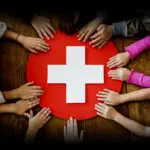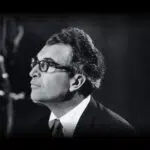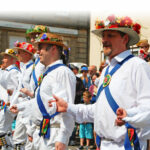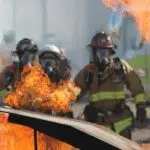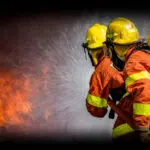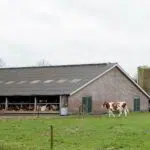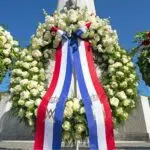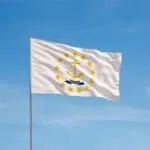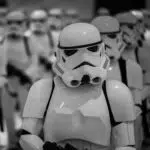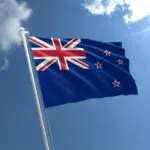Kent State Shootings Remembrance is on May 4 of every year and honors the lives of four unarmed college students killed during protests. On this day in 1970, members of the Ohio National Guard shot and killed students who were peacefully protesting President Nixon’s pro-war policies. The perpetrators got away with their crimes and were never held accountable. The shootings at Kent State sparked furious protests across college campuses in the U.S. that ignited the most seminal anti-war movement the country had ever witnessed. Eight million students participated in a national hunger strike and effectively brought the U.S. education system to a standstill.
History of Kent State Shootings Remembrance
On April 20, 1970, Nixon announced that the U.S. had withdrawn 115,500 troops from Vietnam and that another 150,000 men would leave by the end of 1971. After years of escalation, the Vietnam War seemed to be ending. But the euphoria was short-lived. 10 days later, Nixon announced that America and South Vietnam were mounting a military offense against Cambodia — long considered a haven for North Vietnamese soldiers and the Viet Cong. The American public did not know that the bombing of Cambodia had begun months before Nixon’s announcement. Protests erupted on campuses across the country the next day.
Meanwhile, in Ohio, students at Kent State prepared to join the anti-war movement. Discontent was rife and on May 1, enraged students (fuelled by anger and alcohol) set fire to garbage cans and broke store windows. By morning, campus police had restored order. Regardless, Kent Mayor Leroy Satrom declared a civil emergency and requested support from governor James A. Rhodes. Rhodes, a staunch conservative, dispatched the Ohio National Guard to quell plots by “radicals.”
Rumors of radical activity in Kent State continued to spread. Demonstrators grew increasingly agitated at the presence of the National Guard. By May 3, there were nearly 1,200 National Guardsmen on campus. When demonstrations grew increasingly hostile, the Guardsmen read the Riot Act and forcibly dispersed the crowd with bayonets and tear gas. Martial law came into effect, although unofficially. Authorities banned demonstrations on campus but many students remained unaware or defiant. Classes resumed on May 4. On the same day, over 3,000 students gathered at a grassy area called the Commons to protest Nixon’s war and the presence of the National Guard on campus. The National Guard confronted the crowd with Garand M-1 rifles and live ammunition. The Guardsmen fired 61 and 67 shots into the air and the crowd, killing four students and wounding nine others.
Rage and indignation swept across the country. In the following weeks, hundreds of college campuses organized strikes, demonstrations, and rallies. The shootings at Kent State triggered a wave of anti-war activism throughout the United States — even surpassing the student movement that compelled Lyndon Johnson to refrain from seeking re-election.
Kent State Shootings Remembrance timeline
Kent State Normal School (later Kent State University) opens as a teachers’ college in Kent, Ohio.
President Richard Nixon wins the elections, in large part due to promises to end the Vietnam War.
On April 30, President Nixon announces a major U.S. military offense against Cambodia.
Crosby, Stills, Nash & Young release the song ‘Ohio,’ which instantly becomes an anthem for the anti-war movement.
Kent State Shootings Remembrance FAQs
What inspired the protest at Kent State?
In 1970, students at Kent State planned protests against Nixon’s war ambitions. The protests were a part of the larger anti-war movement in the country since the Vietnam War.
What happened to the Guardsmen at Kent State?
In 1974, a federal court dropped all charges against the Ohio National Guardsmen. The court ruled that the guardsmen acted out of self-defense and absolved them of any criminal charges.
How many troops did Nixon send to Vietnam?
Nixon sent over 549,000 U.S. troops to Vietnam in 1969. By 1972, the number dropped to 69,000.
How to Observe Kent State Shootings Remembrance
Attend commemorative events
Student organizations at Kent State University organize numerous events on campus that are open to the general public. The events include candlelight vigils, concerts, discussions, and speeches. Some of the speakers at past events include Noam Chomsky, Julian Bond, Bella Abzug, and Ron Kovic — pillars of activism during the 1960s and 1970s.
Use the power of social media
Write about the day or share credible resources across social media channels. The events and learnings from 1970 still resonate with the world today.
Ask the right questions
Are there checks and balances to curtail police brutality? How do they ensure student safety on campuses? Ask away and do not hesitate.
5 Interesting Facts About Ohio
We go where Ohio goes
Ohio has historically been the decision or swing state during the U.S. Presidential elections.
Mounds of history
The Ohio region contains over 6,000 burial mounds and forts built by ancient tribes or “mound builders.”
The heart of America
Approximately 50% of the U.S. population lives within 500 miles of Columbus, Ohio’s state capital.
A flag uncommon
Unlike other state flags, the Ohio flag is pennant and not rectangular.
Breaking racial prejudice
In 1967, Carl Stokes in Cleveland, Ohio, became the first African-American mayor of a major city.
Why Kent State Shootings Remembrance is Important
So that history never repeats itself
The shootings at Kent may seem lifetimes away. But gun violence, discrimination, and governments abusing power are still contemporary realities. Today, we remember to keep fighting the good fight.
Remembering lives lost
The day remembers the courage and conviction of people who fought to secure our futures. It’s a peace we must not take for granted.
It is inspirational
How often have we second-guess ourselves — convinced that we won’t make a difference? The students at Kent State University demonstrated what collective will and action can achieve.
Kent State Shootings Remembrance dates
| Year | Date | Day |
|---|---|---|
| 2026 | May 4 | Monday |
| 2027 | May 4 | Tuesday |
| 2028 | May 4 | Thursday |
| 2029 | May 4 | Friday |
| 2030 | May 4 | Saturday |





